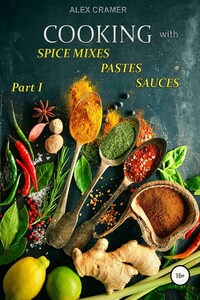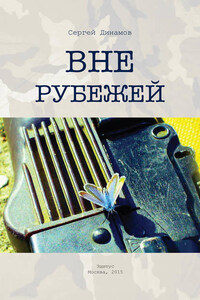INTRODUCTION
Combined with one another, spices can turn into delicious and mouth-watering dish any food, even the simplest food. And the opposite is true: even the high cuisine dishes can be easily ruined by wrong spices combination.
Spice blends or seasonings are undoubtedly the most important ingredients for creating delicious dishes. They are able to turn ordinary food into an incredibly tasty masterpiece.
Nowadays, there are thousands of different books written about spices, however spice blends are hardly mentioned in those books. My book is devoted to different aspects, fine points and nuances of making spice combinations. I will not get into much details with spices, I will just mention them. Instead, I am going to pay full attention to spice blends and combinations.
Many of the culinary amateurs and enthusiasts are familiar with the situation when they follow the recipe, use fresh products and quality ingredients, but the dish they cook does not turn out well. Do you know what I am talking about? Why do we often stick to the exact recipe accurately, strictly follow the cooking time but still the dish turns out to be flavourless? We try to analyze the whole process and understand that we did everything right. So why did the food we cooked turn out to be different from what we have expected it to be?
The answer is simple: we are afraid to use and absolutely do not know how to use seasonings and spices in our daily cooking. I'm sure that you have some, maybe even dozens of spices and seasonings hidden in your kitchen. So why do not you use these gifts of nature to cook a truly delicious and healthy dish and enjoy it?
In this book, you will find solutions to the problems of many cooks. You will find specific directions to learning the art of mixing spices and creating unique aromatic spice combinations that can improve, emphasize and give an incredible taste to any dish.
This book will also be useful for those who masterfully mix spices and know how to use their unique purpose. You will definitely discover a new mixture and combination of spices that you will certainly add to your favorite dishes.
GENERAL INTRODUCTION
Basically, all spices originate from plants. Some of them include the whole plant, and some include only spare parts such as flowers, roots, bark, leaves, stalk or seeds. This is where all flavoring and aromatic components of spices are hidden.
Freshly made spices – slightly roasted in a frying pan, crushed in a mortar or ground in a coffee grinder into a powder – display an incredible aroma both individually and combined with other spices.
Skillful cooks never buy spices and seasonings in a store. They prepare spices by themselves in the kitchen. And it is irrelevant whether it is a simple mix for marinating meat and pilaf flavouring or a deeply-rooted all-purpose regional mix such as garam masala and ras-el-hanout – home-made combinations are much cheaper, more aromatic and, most importantly, much healthier than those you can find in stores.
Another, by no means unimportant, advantage of home-made mixes is the fact that you can make a small amount of mix at a time rather than buying a whole package of seasonings that will be stored for a long time which can lead to flavor and aroma fading.
In this book, you will learn recipes of blends from all over the world. You will know how to create truly incredible culinary delights filled with an abundance of flavors and aromas from different world cuisines.
There are so many different ways to mix spices together and an abundance of flavors and aromas of each mix you have prepared will allow you to improve up same dish an infinite number of times. You will get familiar with a huge variety of dry mixes, spicy pastes and sauces based on those mixes, from the most popular to very rare combinations. On learning this material, you will be able to play with flavors and tastes of dishes like never before.
If you have all the necessary herbs and spices stored in your kitchen, you can easily make any of the spice blend described here. Nowadays, you can easily find some spices in any store, though you might have to look up in specialized shops for some other spices.
I personally recommend using the whole spices only. In most cases, it is necessary to warm up seeds or grains before grinding. It will help to release essential oils which leads to intensification of flavor and aroma.
A LIST OF EQUIPMENT FOR WORKING WITH MIXES
Making of a perfect spice blend is not a hard task to do. And I am going to describe devices you will need to make it easier for you to create different combinations.
Mortar and pestle
A mortar is perfect for mixes that require coarse or medium grinding. Simply crush the seeds with a pestle until the desired grinding and combine them with other components of the mix. Also, you can use a mortar to make spices of fine grinding or powder. First, you need to crush the whole spices, for example, star anise or cinnamon in a mortar and then put them in a coffee grinder. This will help you to prevent incomplete grinding in a coffee grinder since not every device is able to cope with this task and create a fine powder. There can be pieces of whole spices remaining in a coffee grinder if made without preliminary preparation. Also, mortar is hard to replace when it comes to fresh ingredients such as chili, ginger, garlic, lemongrass and many other ingredients for spicy pastes. You should avoid poor-quality and wooden mortars. You should purchase a wide stone mortar that will serve you for many years.
Coffee grinder (mill, food processor, blender)
These kitchen appliances are hard to replace when the mix requires fine grinding or powder. Besides, blender is useful when you need to grind fresh ingredients for mixing them with dry ingredients for making paste. All you need to do is put the spice you need into a blender and grind it to the required substance. Use a particular blender designed only for grinding spices. By no means use the same appliance to grind coffee, spices and other products. I recommend that you use a blender or grinder for fine grinding of spices with a flat double blade made of stainless steel. Do not grind the whole spices with nozzles consisting of several blades, especially those located at different angles. If you try to use this kind of nozzle you will not be able to get fine powder and just get exhausted with attempts instead.
Thick-walled frying pan

Many recipes in this book require preheating, and even roasting grains and seeds sometimes. As I mentioned before, warming up helps to effuse aroma and to release essential oils from spices. This process brightens the taste of spices as well as the whole dish. In some cases, it is allowed to heat several ingredients at once, in other cases, the spices should be heated one by one. It is necessary to keep in mind that after heating the seeds and grains should be put into a separate bowl, otherwise the spices will simply burn, since the frying pan, as you understand, retains heat for a while even after you have removed it from the fire. Therefore, as soon as you sense the aroma rising you should immediately put spices into a bowl and cool them down. If there are many different kinds of whole species in a recipe that require preheating, then you need to sort them by size and warm them up separately. Do not warm up the seeds and grains of different sizes together as there is a chance to overdevelop smaller ones or not to activate essential oils that will, in its turn, not let the flavor open at its fullest. Also, the frying pan will help you to roast fresh ingredients for adding them into a spicy paste or sauce later.








